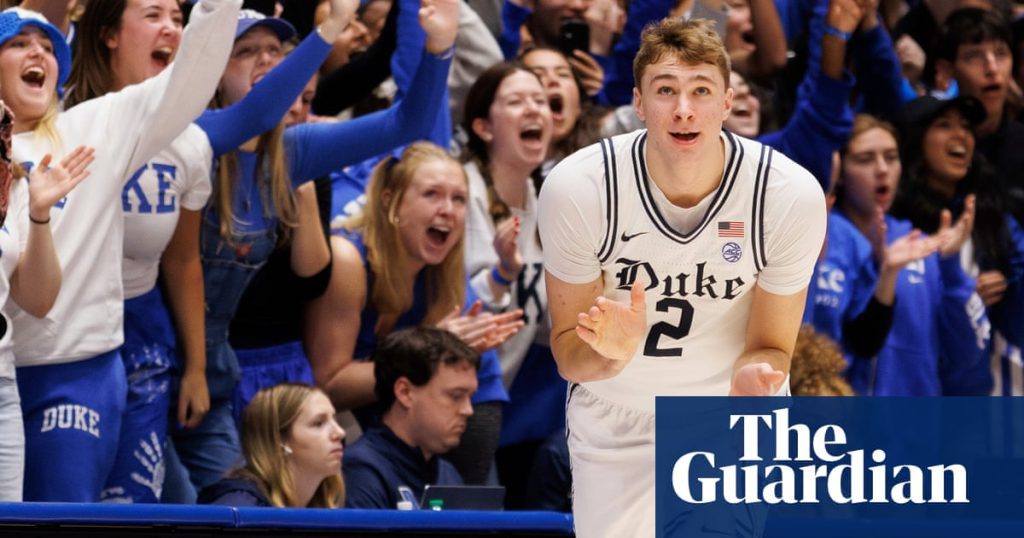Cooper Flagg’s Injury and Its Implications for Duke Fans
During the latter part of Duke’s game against Georgia Tech, standout player Cooper Flagg suffered a severe ankle sprain that necessitated him being wheeled off the court. While this type of injury would typically send Duke fans into a panic—especially with the NCAA Tournament approaching—the overall sentiment amongst fans now appears more relaxed.
Positive Outlook on Flagg’s Recovery
One reason for the fans’ relief is that Flagg is expected to be healthy enough to play in Duke’s first-round game. Additionally, the landscape of college basketball has shifted significantly; a major injury no longer pushes talented players like Flagg to transition to professional careers prematurely, especially since the NCAA’s rules changed in July 2021 to allow athletes to profit from their name, image, and likeness (NIL).
Financial Gains Through NIL
Flagg is one of the best examples of an athlete benefiting from this new system. Prior to donning a Duke jersey, he secured lucrative endorsement deals with New Balance and Gatorade, resulting in a NIL valuation of $4.8 million—second only to Texas quarterback Arch Manning’s $6.5 million.
Decisions for Athletes in College Basketball
Talent scouts are urging Flagg, who is projected as a top NBA draft pick, to consider staying in college a bit longer. ESPN analyst Quentin Richardson pointed out the uncertain prospects he could face if he enters the NBA draft this year, likening it to “purgatory” with likely teams like the Washington Wizards who have struggled in recent seasons. The NIL environment gives athletes the power to remain in school longer, with Flagg even expressing he might enjoy another year of college life.
Financial Calculations and Development
A rookie NBA player is projected to start at $12 million, a significant figure compared to anything Flagg might earn by staying at Duke. Yet for athletes like Flagg, the potential for exponential earnings in the NBA can make a brief delay in entering the league worth it. Doing so would also provide an opportunity for athletes to strengthen their skills against formidable competition.
Risks of Transitioning to Professional Play
Continuing in college, however, does not guarantee a smooth transition to professional basketball. For instance, Kyle Filipowski, who had success at Duke, leveraged his popularity for deals with companies like Dunkin’ Donuts. Despite being projected as a first-round pick, he faced challenges in the NBA after being drafted in the second round. The difficulties many players encounter in the professional arena highlight the risks associated with making the jump too soon.
The Shift in College Sports Landscape
The NCAA’s recent changes allow players, even those who might not project as future stars, to profit from their athleticism while remaining in school. The movement towards NIL agreements began with a significant lawsuit by Ed O’Bannon in 2008, which challenged the NCAA’s amateurism doctrine. While legal battles continue, the structure now gives players more options and encourages them to stay longer in college to build their brands.
Ultimately, the evolving landscape of college basketball enables players like Flagg to enjoy their college experience and weigh their options regarding their professional careers. As Illinois coach Brad Underwood aptly put it, there’s no rush—there’s time to have fun and explore beyond the pressures of immediate draft decisions.



